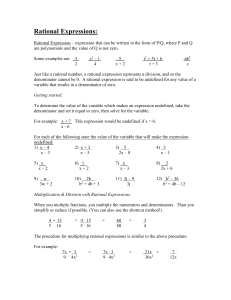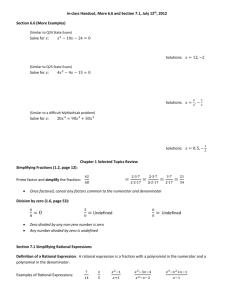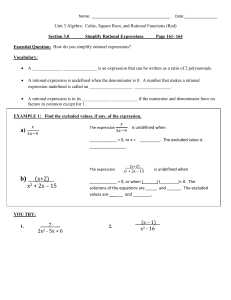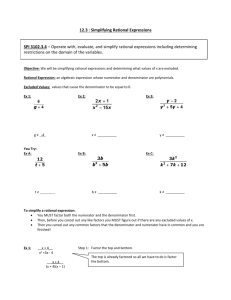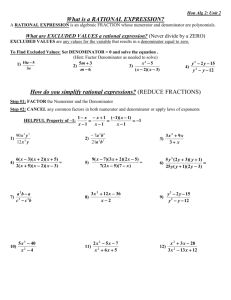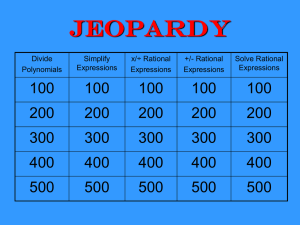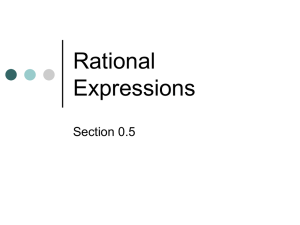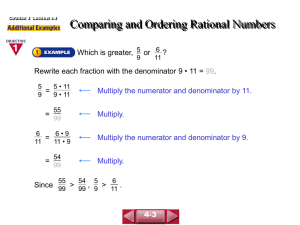Section 7.1 - MiraCosta College
advertisement
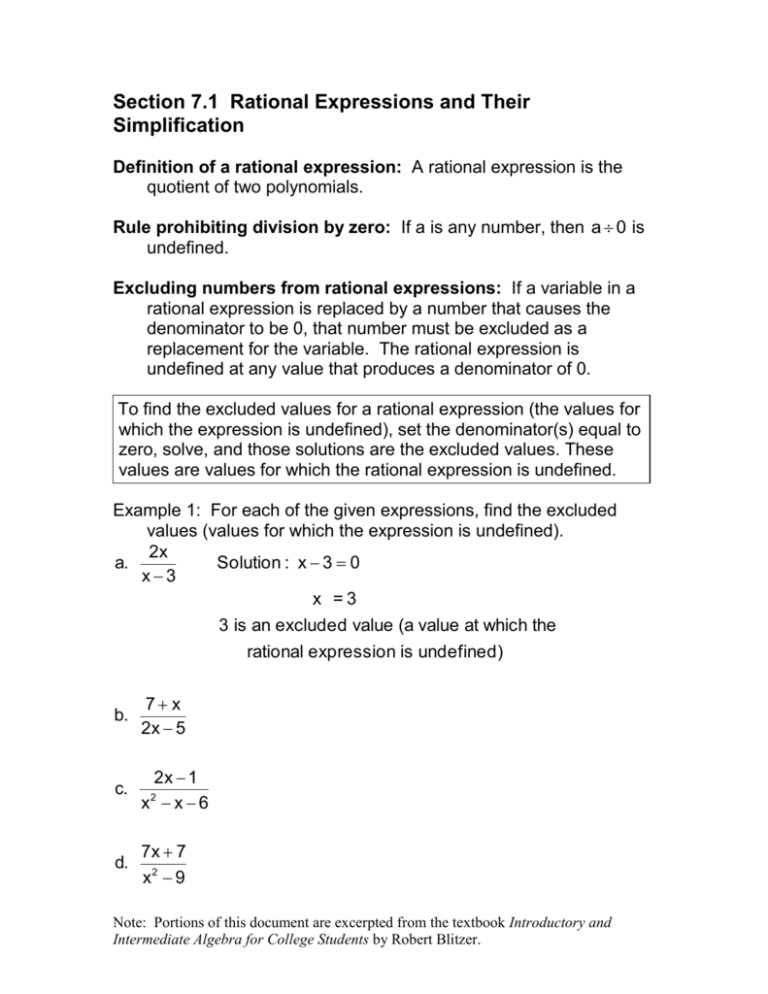
Section 7.1 Rational Expressions and Their Simplification Definition of a rational expression: A rational expression is the quotient of two polynomials. Rule prohibiting division by zero: If a is any number, then a 0 is undefined. Excluding numbers from rational expressions: If a variable in a rational expression is replaced by a number that causes the denominator to be 0, that number must be excluded as a replacement for the variable. The rational expression is undefined at any value that produces a denominator of 0. To find the excluded values for a rational expression (the values for which the expression is undefined), set the denominator(s) equal to zero, solve, and those solutions are the excluded values. These values are values for which the rational expression is undefined. Example 1: For each of the given expressions, find the excluded values (values for which the expression is undefined). 2x a. Solution : x 3 0 x3 x =3 3 is an excluded value (a value at which the rational expression is undefined) b. 7 x 2x 5 c. 2x 1 x x6 d. 7x 7 x2 9 2 Note: Portions of this document are excerpted from the textbook Introductory and Intermediate Algebra for College Students by Robert Blitzer. Simplifying rational expressions: Rule: If P, Q, and R are polynomials and Q and R are not 0, then PR P QR Q Process for simplifying: 1. Factor the numerator and denominator completely. 2. Divide both the numerator and denominator by the common factors. Example 2: Simplify each of the given expressions: 4x 28 4x 7 x 7 a. 20x 45 x 5x b. 10x 15 6x 9 x3 x2 c. x 1 Note: Portions of this document are excerpted from the textbook Introductory and Intermediate Algebra for College Students by Robert Blitzer. Relationship between opposite factors: If two polynomials are identical except that the sign of each term in one polynomial is opposite of the sign of that term in the other polynomial, then one polynomial is the negative of the other. Simplifying rational expressions with opposite factors in the numerator and denominator: The quotient of two polynomials that have opposite signs and are additive inverses is 1. Example 3: Simplify each of the following. If the numerator and the denominator contain opposite factors, the quotient of those factors is 1. x3 x3 x3 1 a. Solution : 1 3x 3 x 1x 3 1 b. 2x 1 1 2x 4x 2 25 c. 15 6x d. x 2 5x 6 8 2x x 2 Applications: 250x models the cost, 100 x in millions of dollars, to remove x percent of the pollutants that are discharged into a river. a. How much does it cost to remove 50% of the pollutants? b. How much does it cost toremove 100% of the pollutants? Example 4: The rational expression y Note: Portions of this document are excerpted from the textbook Introductory and Intermediate Algebra for College Students by Robert Blitzer. Answers Section 7.1 Example 1: a. Excluded value (value for which the expression is undefined) is 3. 5 b. Excluded value is 2 c. Excluded values are 2 and 3. d. Excluded values are 3 and 3. Example 2: x7 a. 5x 5 b. 3 c. x 2 Example 3: a. 1 b. 1 2x 5 2x 5 c. or 3 3 x 3 x 3 d. or 4x 4x Example 4: a. $250 million b. The expression is not defined at 100%, so theoretically it is not possible to remove 100% of the pollutants. Note: Portions of this document are excerpted from the textbook Introductory and Intermediate Algebra for College Students by Robert Blitzer.
